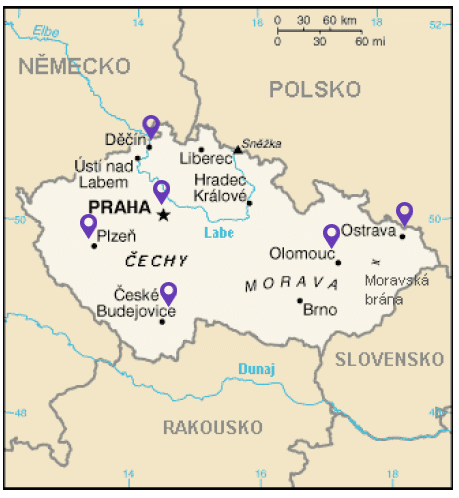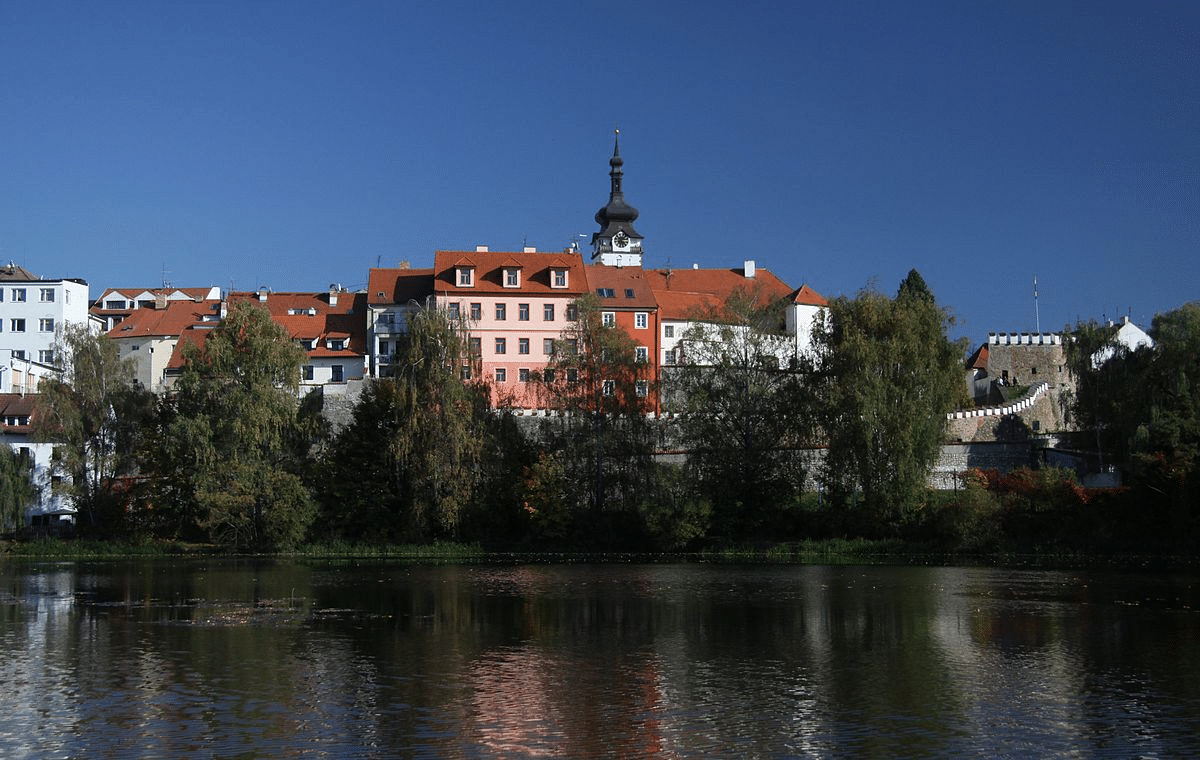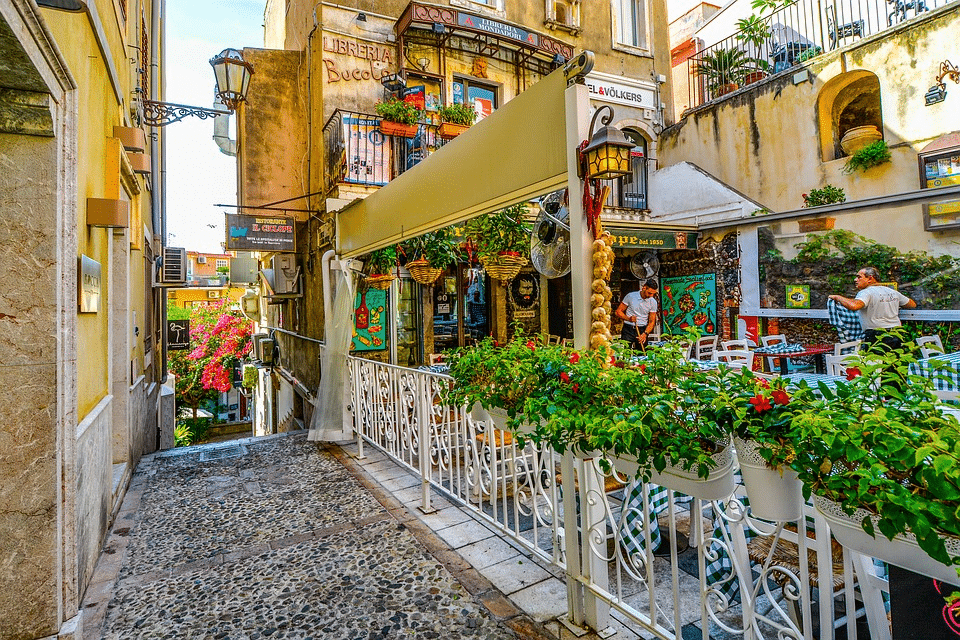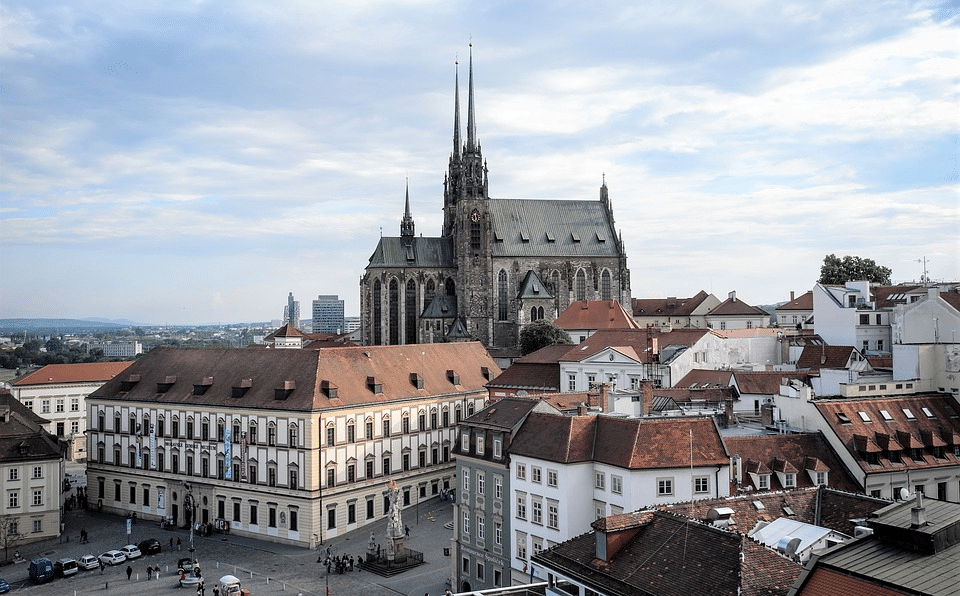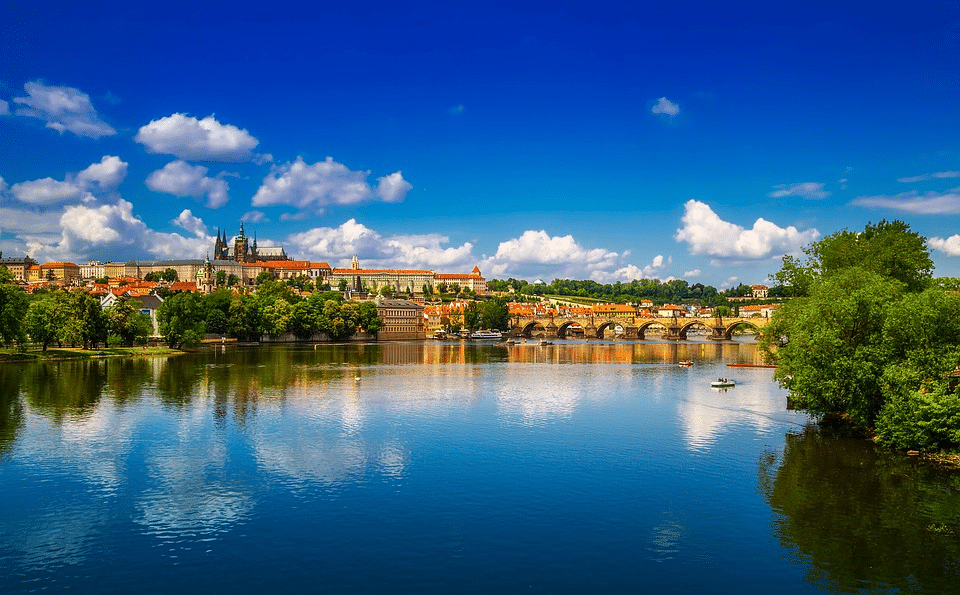4.1 – Locative forms for Places
|
|
|
Now, when we want to say where something is, such as in a city or a country, we’ll use the words v ‘in, at’, though for a few locations Czech uses the preposition na ‘on, at’ (this will be rare for now, but will occur with Morava – na Moravě and Slovensko – na Slovensku).
After the forms v and na, we’ll need forms of the so-call Locative case. We’ve already seen these in 2.8 – Kde bydlíte? – Talking about Where You Live and the Locative Case. Now we will elaborate on these endings:
|
Alena bydlí v Písku. Alena lives in Písek (city in Bohemia). |
V Itálii je v létě často vedro. It is often hot in Italy in the summer. |
|
Jaké je počasí v Brně? What’s the weather like in Brno? |
V Praze je často hezky. It (the weather) is often pretty in Prague. |
|
|
MA |
MI |
F |
N |
|
Hard stem |
We won’t worry about masculine animate forms right now, since they won’t be relevant for locations where things/people might be located |
-u (most common)
Most – v Mostu Písek – v Písku
-e/ě
places ending in -ýn/-ín
Londýn – v Londýně Berlín – v Berlíně
places ending in -ov
Přerov – v Přeově Krakov – v Krakově
some assorted places that you’ll pick up as you speak more, e.g. –
Řím – v Římě ‘in Rome’ |
-e/ě
Praha – v Praze Ostrava – v Ostravě Arizona – v Arizoně
these consonant shifts take place: k → c h → z ch → š r → ř
Praha → v Praze |
-u (most common if the place ends in -ko, though will occur elsewhere as well)
Mexiko – v Mexiku Slovensko – na Slovensku
-e/ě
Brno – v Brně Znojmo – ve Znojmě
|
|
Soft stem |
-i
Liberec – v Liberci
|
-i
Francie (France) – ve Francii Itálie (Italy) – v Itálii Olomouc – v Olomouci Plzeň – v Plzni (fleeting -e-) |
-i
very few cities end in -e (neuter places like letiště, pole), so no good example for where you live
-í Ústí nad Labem – v Ústí nad Labem |
Plural Places
Czech has a lot of place names that are grammatically plural. These types of places don’t really exist too much in English, though one will occasionally find them, such as the Hamptons. What does that mean for you as you learn Czech? Well, let’s check out a few examples:
|
České Budějovice jsou krásné. |
Karlovy Vary jsou velmi hezké. |
In the examples above you can see they use a plural verb and a plural adjective when describing these places. Additionally, we will need to learn locative endings for these. Instead of learning rules, here we will give forms for the most common cities you will encounter (you will notice that all of these will end in -ch):
Karlovy Vary – v Karlových Varech
České Budějovice – v Českých Budějovicích
Pardubice – v Pardubicích
Teplice – v Teplicích
Images used in this document come from these sources.
